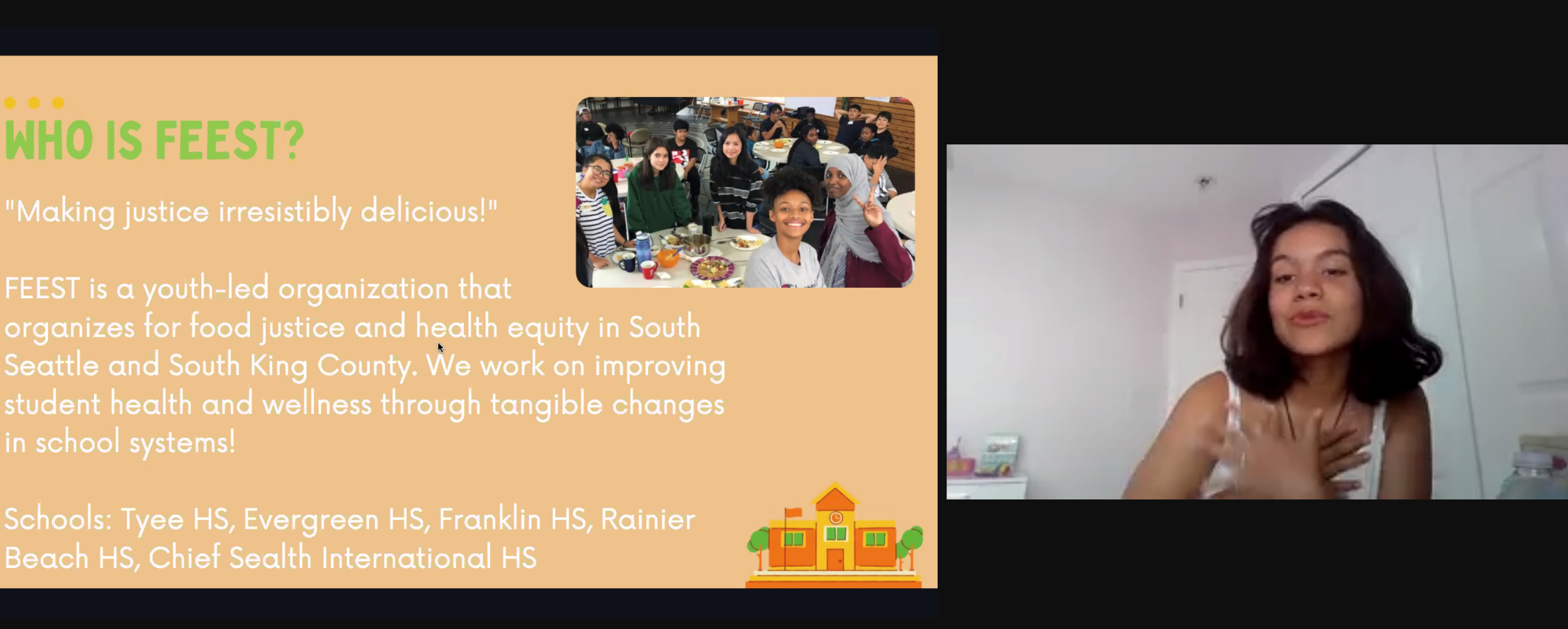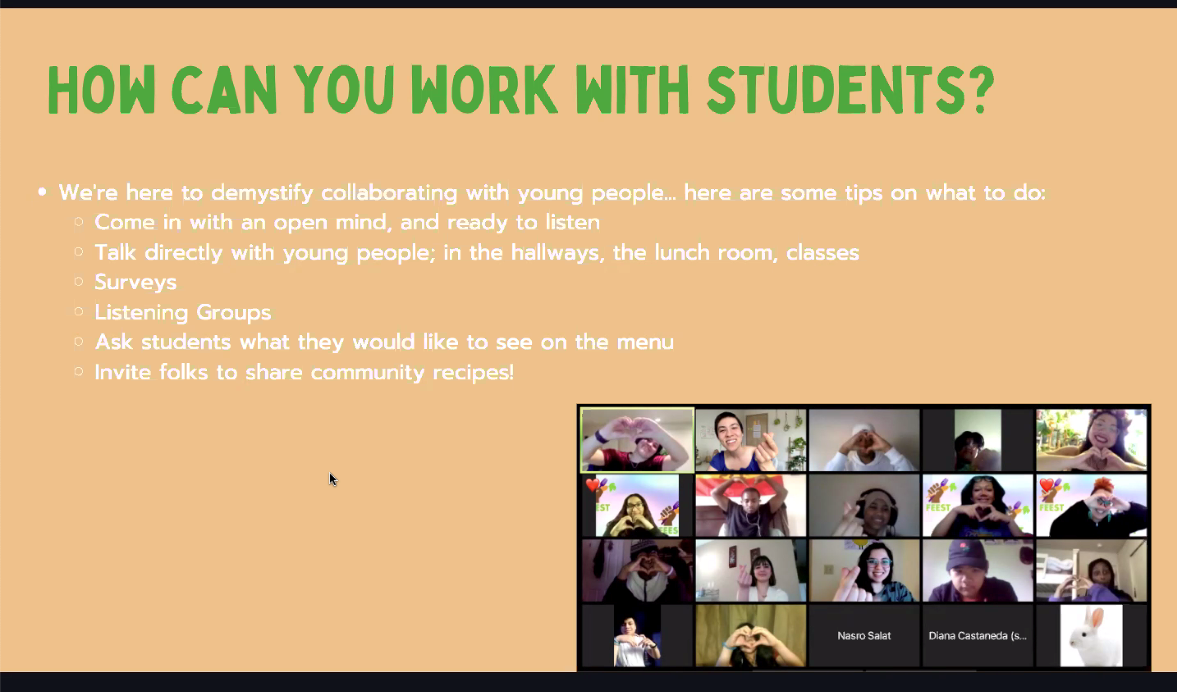How do we get fresh food in schools while centering youth voices in the process? That’s a core question we engaged with at the end of last month when FEEST staff and youth presented at Washington State Department of Agriculture’s (WSDA) Farm to School & Scratch Cooking Institute. The Institute focused on educating food service staff and school administrators on how to implement farm to school programs in their districts. Click here to read more about the Farm to School & Scratch Cooking Institute!
A crucial part of implementing farm to school programs is getting student input, and that’s where we come in! Our Youth Organizer, Mari Ramirez, presented alongside Youth Leader Amelie on why student engagement is so important and how it can be done thoughtfully and effectively. They identified how school food can have deep impacts on the way young people learn and whether they enter the school-to-prison pipeline. Amelie also pointed out how fresh and culturally relevant food can make schools feel more comfortable and welcoming, which decreases student stress and makes it easier to learn.

But it’s not enough to just implement programs for better food without getting input from students! Afterall, they’re the ones who ultimately eat the food—shouldn’t they get a say in what they’re served? By including young people in the planning process, we can ensure that everyone’s needs are met and that people will actually like the proposed changes. Our work over the past decade has shown that if young people are involved in the planning of a program, it’s more likely that the program will be successful and that participation will be high. Besides, our youth are brilliant! It’s important that we recognize their power and ability to develop solutions.
Speaking of recognizing our young peoples’ brilliance, it’s vital that schools respect students when asking for their input. A key tip is to come in with an open mind and be ready to listen. Whether it be through surveys, listening groups, or even conversations in the lunchroom, take the time to genuinely engage with students and find out what they care about. Another good rule of thumb is asking yourself, “how easy is it for our students to give input?” The easier it is for them, the better the feedback will be. And if it’s done well, it’s a win-win for everyone involved!

The presentation concluded with a discussion on the work FEEST has done in Seattle and Highline Public Schools, and how the lessons we’ve learned can help other districts trying to do the same kind of work.
Thank you to the WSDA Farm to School Program for having us, and to all of the participants! We look forward to seeing more of these conversations happen throughout the state ?
